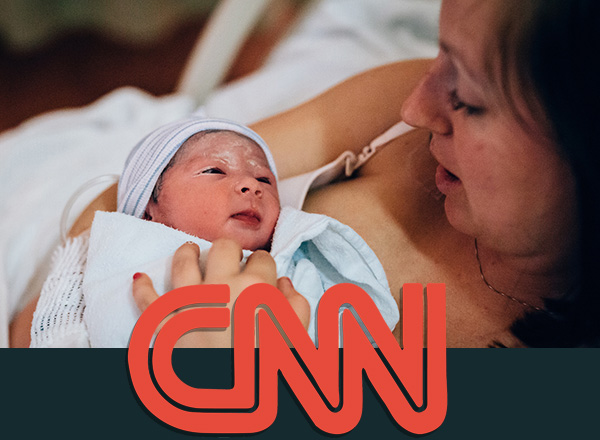Motherhood after Menopause – PRP, the Revolutionary Infertility Reversing Treatment!

And while most of us thought that “The Curious Case of Benjamin Button” was the most peculiar time reversing story we’d ever heard of in recent years, a new scientific revolution has been established and this time in particular from the science field of Gynecology and Genetics. PRP treatment in infertility is the PRP application in ovarian soft tissue which aims at cellular growth, rejuvenation of the ovaries, and periods restarting with a subsequent releasing of Fertile Eggs!
Though some concerns have been raised by a number of medical societies, the reputation of this treatment is spreading exceptionally quickly among women in menopause. The reason for that is the fact that throughout human history and up until today, menopause was strongly and dogmatically connected with the end of a fertile period, the harsh road to infertility, “old age” or more strongly put as the term “grandma” for women.
But exactly what is PRP Fertility Treatment for the Rejuvenation of the Ovaries?
Dr. Thanos Paraschos from Embio Medical Center in Greece, one of the first centers in Europe practicing in PRP ovaries’ treatment explains: “PRP treatment awakens and revives the sleepy ovaries! The PRP injection itself practically causes no problems or any further health issues. It has only to do with injecting the ovaries with the woman’s own blood product. There is no chemical or other harmful medicine introduced to her body. However, the method of administration requires sedation just like a woman would be sedated in an IVF cycle during egg collection. As a result of sedation, which involves transferring blood platelets into the ovaries under sedation, it may cause light pain after the treatment. Rarely, side effects may include post-operative bleeding and fever.”
Is The Treatment For The Rejuvenation Of The Ovaries Equally Effective On All Women?
Dr. Paraschos notes: “every woman's body is different and PRP application will not succeed for all women. Even when it succeeds, and menopause is reversed, women should know that menopause is reversed for a rather short period of time which may not be enough for pregnancy. While there are not many years of statistical evidence, this unique and simple treatment is the most recent and modern breakthrough in the fertility sector and can possibly offer the chance of pregnancy, by use of a woman's own eggs, even when her ovarian reserves are depleted. Studies and EmBIO clinical applications exhibit exceptional results, considering the relatively low cost and very minimal side effects.”
PRP Success Stories
- I finally became a mother after my PRP treatment in Greece
- How Penny got pregnant after PRP endometrial rejuvenation
- Danica and Vlado from Serbia
The PRP Fertility treatment is regarded as a rather low cost, low-risk treatment but how long does it actually take until a woman sees its results?
According to Embio records, in order for a woman to know whether this has worked or not, if she has already entered menopause, the PRP application should restart her menstrual cycle, at least for a while. For the women that are not in their menopause, they should see an improvement in their hormone levels.
Duration of PRP Treatment
Approximately 1 to 3 months after the PRP application, an increase in the AMH level and a subsequent decline in FSH and LH level should be observed. Please keep in mind that not every woman reacts the same way to PRP application and, in some cases, growth factors can take up to 6 months to show their effect. Therefore, tests should be scheduled in order to monitor progress up to 6 months.
Before getting started, EmBIO team will ask for an AMH, FSH and LH test at a local lab. Once women have received their treatment and return home, the Embio team will ask from them to repeat the same tests in 2 and 3 months’ time (preferably in the same lab or at least one with the same facilities and equipment). It is important to use the same lab for your testing in order to eliminate any possible variations in lab measurements.
Dr. Paraschos also presented the case of a 50-year-old woman that after a 6-year menopause period, her periods restarted and in the following 6 months she had her first Successful IVF attempt with a donor’s sperm and her own fertile eggs. The woman reported an easy going PRP and IVF process and pregnancy so far. “this method is the evolution of the century” she said, “I never expected that after years of menopause I would experience the gift of pregnancy! I wish I could go out and speak to all women who think that their lives have been destroyed or it’s over following early menopause” she said.
Also, Embio recommends among the initial tests, that all the pre-operative blood work (CBC) and the infectious disease screening panel including VDRL, HbsAg, HCV, HIV need to be included. Therefore, there are no surprises for the women after the PRP treatment.
Within 1-2 months after the PRP ovarian rejuvenation, an IVF attempt in the clinic during a natural cycle, without ovarian stimulation, is expected to harvest the results from previous PRP application.

